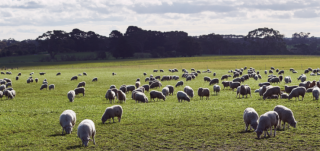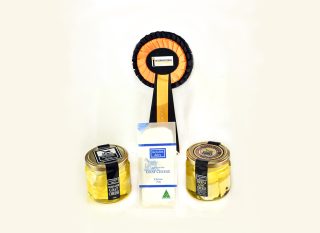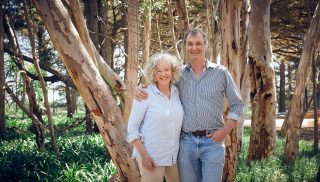Meredith Dairy, the nation's biggest sheep and goat dairy, is living proof that thriving, sustainable businesses can sometimes emerge from the depths of despair.
In the early 1990s, the abolition of the reserve wool price flipped the sheep industry from relative prosperity into chaos, forcing merino farmers Julie and Sandy Cameron to cull the animals they had expected to nurture.
However, a chance conversation in 1991 with a family friend, cheesemaker Richard Thomas, set them on an unlikely course.
"At the time we were forced to shoot sheep and bury them because they were worthless and our income had disappeared," Ms Cameron said.
"We felt we had to move away from producing commodity products so we could have some say in the returns of our produce.
"Richard told us we already had the sheep and that the best cheese in the world was made from sheep milk.
"Of course, he was talking about a high-end blue cheese (Roquefort) made in the south of France, but 32 years down the track we're milking both sheep and goats and making a range of specialist products."

Meredith Dairy has evolved into a complex, vertically integrated business, growing fodder and grains and prime lamb and goat meat, in addition to the dairy enterprise.
The milk comes from eight dairy farms, five of which are located within the main farm boundary in Meredith, 120kms west of Melbourne.
Dairy products, including a range of marinated and fresh goat cheeses, as well as fresh goat cheeses and sheep and goat-milk yoghurts, are all made in a purpose-built facility and freighted to a warehouse before selling locally and offshore.
The Meredith Dairy marinated goat cheese has enhanced the nation's brunch staple of smashed avocado, with its soft cubes of cheese blended in extra virgin olive oil, peppercorns, fresh thyme and garlic.

Urban myth or not, the popularity of goat cheese among urban hipsters has helped underwrite Meredith Dairy's 5-7 per cent annual revenue growth.
The company's emphasis on sustainability has now extended across its operations, from extensive tree-planting and biodiversity protection to using manure from their animals to fertilise the cropping land and drawing on renewable energy for food production.
Dairies typically consume a significant amount of electricity, gas and transport fuels, which are used for heating, cooling and lighting as well as the operation of plant and equipment.
Meredith Dairy has therefore taken steps to cut its reliance on coal-fired electricity, gas and diesel.
It invested in solar hot water, and an LNG boiler was replaced with a biomass-fuelled boiler which is fed with woodchips generated from waste timber on the farm.
This was part of a larger, $310,000 upgrade of the dairy's hot water systems.
Gas from burning woodchips now fires a renewable energy plant supplying 70 per cent of the facilities' electricity, with further power harvested from 100Kw of solar panels.
Ms Cameron said the dairy products were now produced with 100 per cent renewable energy.

Energy consumption, however, was only one aspect of the business's greenhouse gas emissions.
Accurate and scientific measurement of methane from the farm animals was still required to determine the overall carbon footprint, and energy is a significant input in glass packaging.
Meredith Dairy soon hopes to use 100 per cent recycled packaging, ideally backed by renewable energy, up from the current level of 70 per cent.
"It's complex - we're vertically integrated with a large land holding so we can sequester a significant amount of carbon but our animals produce methane," Ms Cameron said.
"So until we can accurately measure carbon emissions and implement further abatement measures, we are not yet carbon neutral. But it is our hope."






